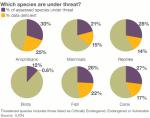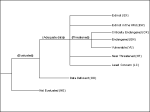 Rare Amur Leopard
Rare Amur Leopard
In our modern world where the conservation of our surrounding environment is becoming more and more vital, global conservation networks are expanding to try and make people aware of what is going on, and what needs to be done to try and fix it. But, when organisations such as the IUCN are mentioned, how many of us really know anything about them?
The IUCN (International Union for Conservation of Nature) is the world's largest global environmental network, established in 1948 to help to provide practical solutions to the bigger environmental challenges that we are facing. It was founded by governments, foundations and large corporations and has become a leading authority on the environment and sustainable development today.

All over the world, the IUCN supports scientific research, manages field projects and brings government and non-government organisations together with foundations and local communities, to both develop and implement law and to find the best practical solutions to the problem of species extinction. There now almost 11,000 volunteer scientists working in 160 countries.

One of the most ground-breaking advances of the IUCN however, was the founding of the species Red List in 1994. Research soon began all around the world, to both identify and document those species that are in most need of conservation, and to provide an index of the state of change in biodiversity across the planet. Growing Human settlements and vast forest clearance for agriculture are widely believed to be the main culprits for species loss.

The IUCN Red List is thought to currently document almost 60,000 plant and animal species, with the survival of all of them now counting on our ability as a race to protect and conserve them. Species are classified by whether or not their populations and habitats are sustainable, and their risk of becoming extinct in their natural environments in the immediate future.
To learn more, please visit the IUCNand the IUCN Red List of Threatened Species websites.

